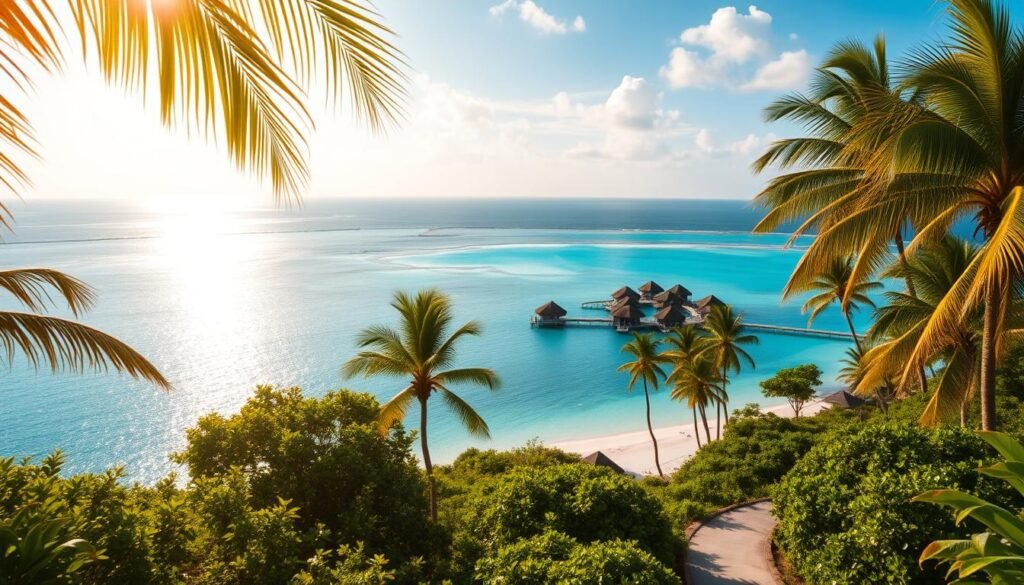Surprising fact: the Maldives stretches across nearly 1,200 islands in 26 atolls in the northern Indian Ocean, yet most travelers see only a handful of those coral-ringed shores.
I wrote this guide because I want you to match a dream island trip with real weather, price, and availability trade-offs. The archipelago offers warm days near 30°C and plenty of sun year-round, but the calendar splits into two main season patterns.
In this short guide I’ll show how the dry months bring clear skies and peak prices, while the wet months often mean lower rates and occasional showers. I’ll also point out shoulder weeks in late April and late October that can balance sunshine and savings.
Key Takeaways
- I outline how season and weather shape beach days and water activities.
- Dry months give the best visibility; wet months deliver value.
- Shoulder windows can offer a good balance of sun and savings.
- Resort availability and festivities affect pricing during peak weeks.
- Simple logistics, like choosing a speedboat over a seaplane, can cut costs.
Maldives seasons at a glance: dry, wet, and shoulder periods
Quick overview: I map the archipelago’s seasonal shifts so you can match weather, crowds, and costs with your plans. The island climate divides into clear dry months, a wetter monsoon stretch, and brief shoulder windows that often deliver a smart compromise.
Dry season (November–April): sunshine, low rainfall, higher prices
Dry season runs November through April. Rainfall is minimal, humidity still lingers, and resort rates climb as demand rises.
January through March are the driest months on many islands, giving long, bright days and steady temperatures ideal for beach and water time.
Wet season (May–October): frequent showers, variable sun, better value
Wet season is driven by the southwest monsoon. Expect more frequent showers and occasional stormy stretches, with some islands seeing up to nine inches in a wet month.
That said, sunshine windows are common and resorts often discount packages, so you can score value if you accept flexible plans.
Shoulder windows (late October, late April): balance of conditions and cost
Late October and late April are my favorite compromise. You may get decent sunshine and lower prices than the high season.
“Pick a season that fits how you like to spend your days—steady sun, quieter resorts, or a budget stretch with variable weather.”
The best time to visit Maldives based on your priorities
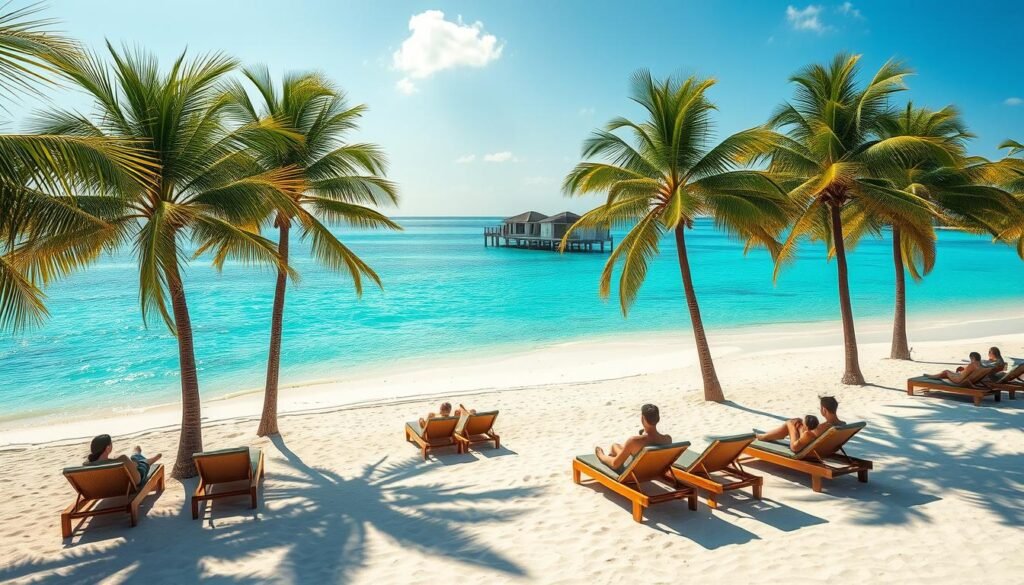
My trips start by choosing which trade-off matters most: steady sunshine, quiet beaches, or lower rates. Below I map common priorities to the season choices so you can match weather and value with what you want to do each day.
If I want reliable beach weather and calm seas
Dry season (November–April) gives the most predictable beach days, calm sea entries, and high visibility for snorkeling. I aim for January through March for the clearest underwater conditions.
Note: festive weeks around Christmas and New Year push rates and require early booking if holidays are part of your plan.You can learn more about best-places-to-visit-in-maine
If I want fewer crowds and better deals on resorts
The wet season (May–October) usually drops prices and guest numbers. May and June often offer the deepest discounts and quieter islands.
- Shoulder weeks in late October and late April balance decent weather with friendlier pricing.
- If I accept variable conditions, upgrades or extra days can make a higher-category stay affordable.
| Priority | Season | Why it works |
|---|---|---|
| Predictable sun | Nov–Apr | Calm seas, high visibility |
| Best value | May–Oct | Lower rates, fewer guests |
| Middle ground | Late Oct / Late Apr | Fair weather, moderate pricing |
For a concise planning guide and calendar options, I also check resources like best time visit before booking.
Timing your trip for activities: visibility, surf, and sea life
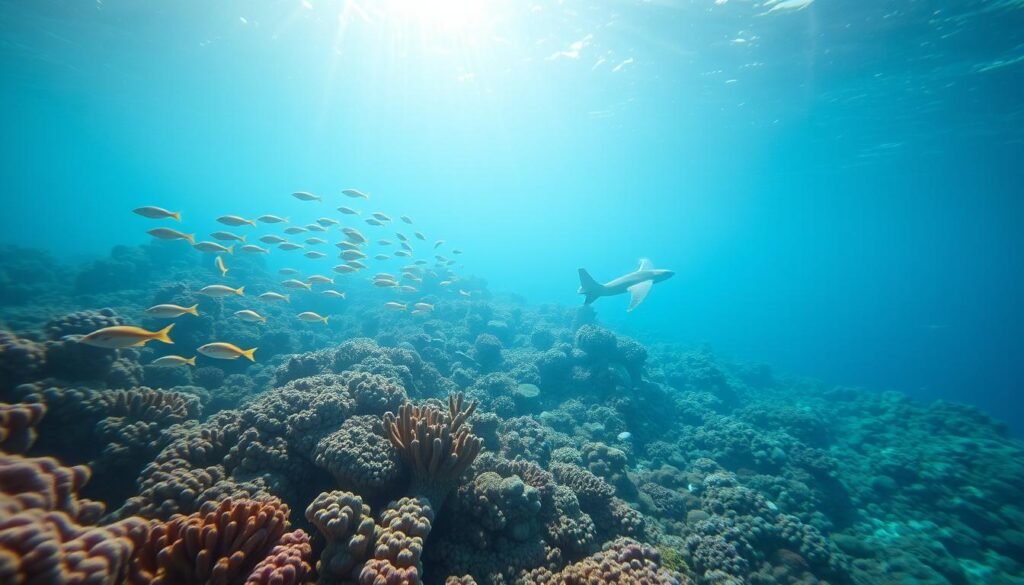
I plan activities around light, currents, and swell so every ocean day matches my goals.
Diving and visibility
I schedule diving in January through April because visibility peaks then, especially in eastern atolls. Clear water and steady currents make it easier to spot pelagics and intricate reef life.
I aim for at least two consecutive dive days to protect against shifting weather and to increase my odds of top visibility.You can learn more about best-cities-to-visit-in-italy
Surfing conditions
If I chase surf, I look at May through October for consistent swells. April to September also brings strong breaks across several islands.
Tracking daily swell reports helps me pick the right breaks and saves transfer time so I get more waves per day.
Snorkeling, kayaking, and paddleboarding
For calm water activities, December and January are my go-to months. The sea is usually glassy, which makes snorkeling and paddleboarding easy and safe for all levels.
Marine moments
Manta rays and whale sharks often appear between August and November in select spots. Sharks and other large visitors can show up year-round, but currents and visibility make encounters memorable.
“Plan wildlife days around local guides’ tips — currents and seasons shape when and where animals gather.”
| Activity | Prime months | Why |
|---|---|---|
| Diving | Jan–Apr | Peak visibility, eastern atolls |
| Surfing | May–Oct | Consistent swells, April–Sep peaks |
| Snorkel & paddle | Dec–Jan | Calm sea, easy entry |
| Wildlife | Aug–Nov | Manta rays, whale sharks sightings |
Month-by-month weather and conditions across the islands
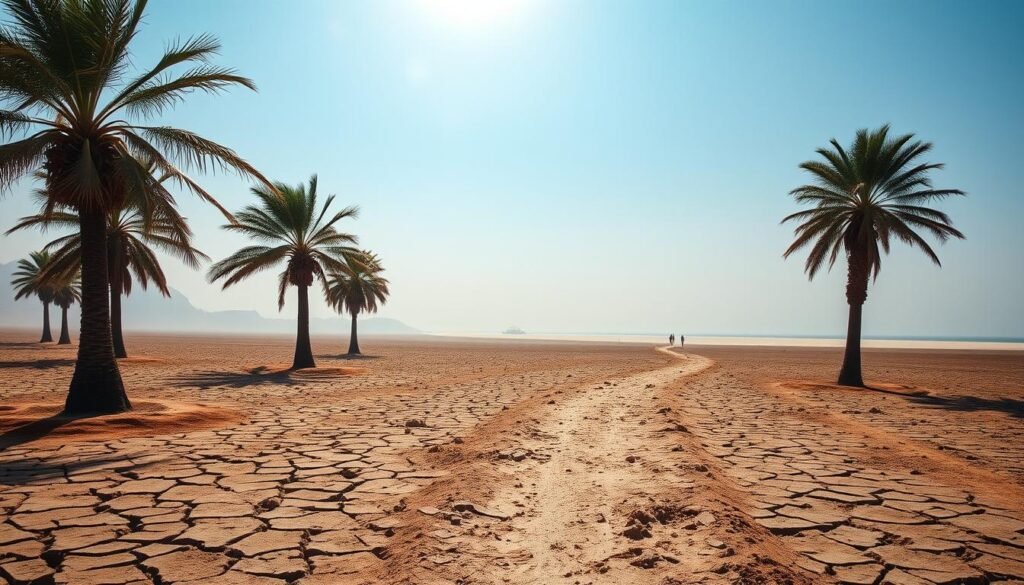
November through April is the clearest stretch for most activities. I plan long days of sunshine with minimal rain and steady temperatures across the atolls.
January–March stands out as the driest window. I rely on these months for consistent daylight and high visibility for snorkeling and diving.
Humidity still lingers even in high season, so I carry lightweight layers and pace my day around early mornings and late afternoons.
- From November through April, I expect long, bright days and little rain—ideal for outdoors-all-day routines.
- Visibility peaks January through April, which is perfect when I focus on underwater photography.
- Resort prices rise in this season; I book early to lock the villa and preferred island layout.
- I watch late April as a shoulder window: softer pricing while keeping most of the dry season appeal.
“Plan sunrise activities on calmer mornings — lagoons are glassier and visits run smoother.”
For a detailed calendar and local month notes, I also check a trusted monthly weather guide.
Smart planning tips for a better Maldives trip from the U.S.
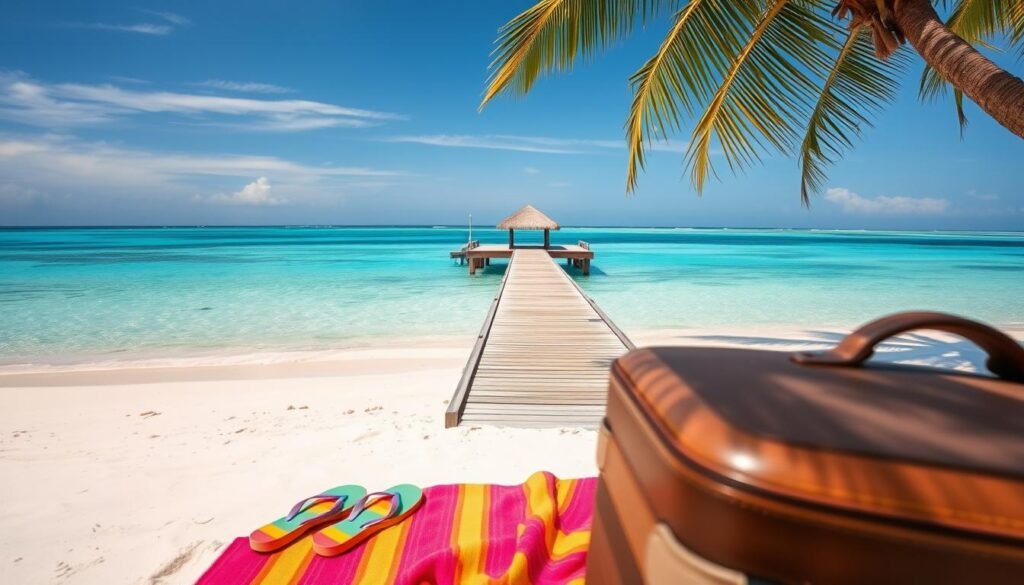
With a few simple tricks, I trim flight costs and turn seasonal deals into a richer island holiday.
Stretching your budget
Low season (May–Nov) brings deep discounts, package deals, and discounted overwater bungalows. I book flexible packages and watch flash sales for free nights or upgrades.
Transfers and logistics
I compare seaplanes and speedboats. Seaplanes are scenic but often cost hundreds more; speedboats save money and still get me close to clear water quickly.
- I pick atolls close to my main activities so I spend time on the water, not in transit.
- I weigh guesthouses, boutique properties, and larger resorts based on service and budget.
Festive periods and practicalities
Christmas and New Year require early booking; resorts run special programming and top rooms sell out fast. I protect my holiday with travel insurance and confirm transfer times that match my international flights.
“Aim for buffer days if you chase manta rays or whale sharks—weather shifts can change plans, but the sightings are worth the flexibility.”
Conclusion
I wrap this guide with a simple rule: pick months that match your priorities. If you want near-guaranteed sunshine and top scuba and diving visibility, I choose the dry season and accept higher rates.You can learn more about best-time-to-visit-tokyo
If I chase value, I lean into the wet season, plan around passing showers, and enjoy quieter islands and better offers. For a smart middle ground I target late October or late April.
For marine life, I watch late summer into fall for manta rays and whale sharks and keep one flexible day for sightings. Temperatures stay warm, water is inviting, and careful planning turns any season into a memorable holiday.


